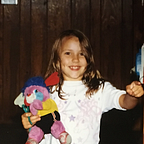Prototyping for Joy
Hi, I’m a member of the newly named Joy Dept., a group of CU Boulder grad students creating delightful spaces where people can come together. We’re currently working on building an experiential seating environment in a public space, a shared experience that amplifies and scales the more people participate.
We’ve just started prototyping to test some of our ideas and assumptions — one of the biggest assumptions being that people will want to interact with others if they are stimulated by their environment.
For our first prototype, we set up puzzles in public places to observe how people approach and interact with something novel. We spread the puzzle pieces out on a table with a sign next to it inviting people to “join in.” Would people ignore this? Would they be curious and walk over? Would anyone start putting pieces together? These are some of the questions we hoped to answer.
Supplies used: one cat puzzle, one hedgehog puzzle, one small table, two pieces of poster board, and one roll of glitter duct tape.
Locations: Pearl Street Mall, CU Boulder Campus
Key Takeaways:
Weather matters — snow and rain are the more obvious deterrents to interacting with something outside, and we tried to plan around those. During prototyping, we realized that wind can be a deterrent too (even on a sunny and warm day).
People stopped to put puzzle pieces together! At one location, we observed four people in 50 minutes. Even when there was another person hovering near the puzzle, a young man still walked over to investigate and put a few pieces together (so strangers in very close proximity — at least in this case — weren’t a deterrent). The puzzle was one of the simplest prototypes we could come up with to test if people would interact with something they weren’t expecting to find in their environment, and it worked.
The fewer physical components we have as part of our final creation, the better. The first day of prototyping on campus, our hedgehog puzzle lost a piece (most likely due to wind, but still). Small pieces can easily go missing.
Stay tuned for our next prototype!
